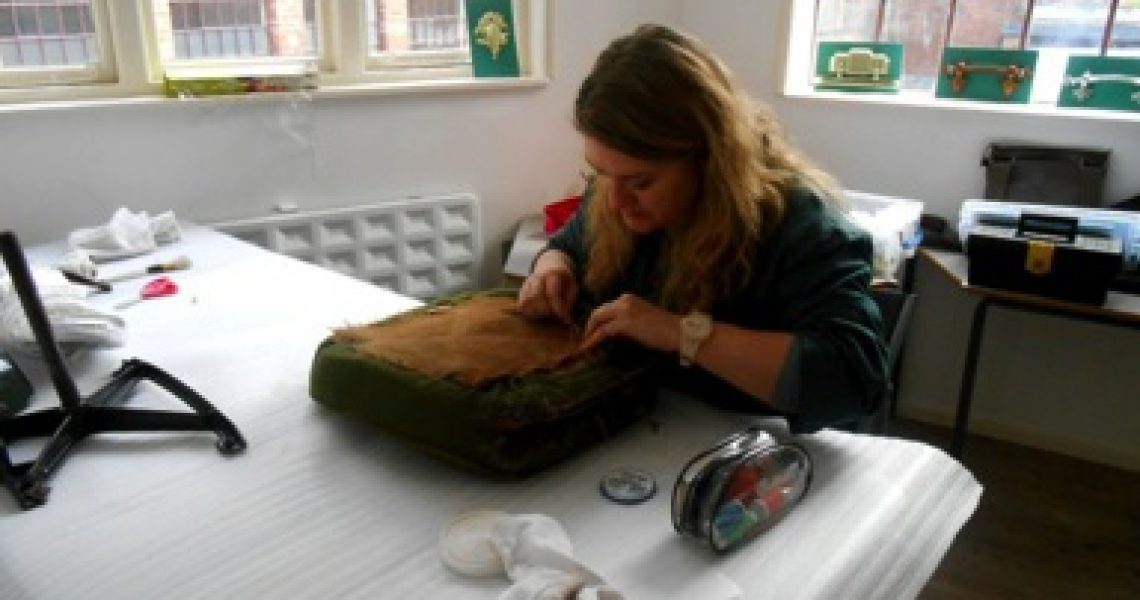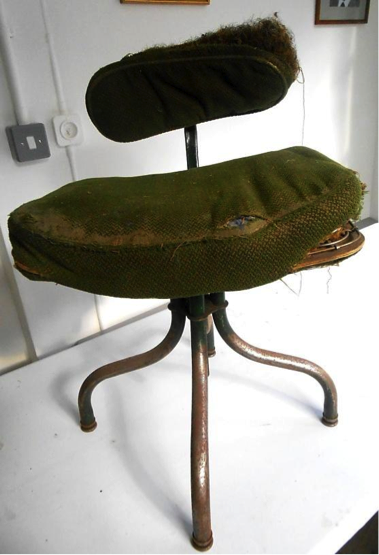
This blog post is a brief summary of the conservation carried out on one of the objects in the Coffin Works’ collection. The chair is no longer used for its original purpose and today it is part of the open display that shows how the Shroud Room looked in the 1960s.
Each of the sewing machines in what is known as the Shroud Room is equipped with a work chair; most of these display visible signs of wear and tear and it is obvious they were all well used. Each is different and it is interesting to notice how the women who used them carried out their own repairs when needed, like draping a new layer of lining on a worn cover or even applying adhesive tape to tears.
One of these chairs was in need of urgent attention, as the cover had torn to expose the stuffing that was now protruding dangerously at one corner of the backrest. The spring-back seat had torn edges and had become misshapen by the damaged coils that were pushing it upwards.
The back rest had become unstable and the legs have lost much of their paint layer had become dull with dust and corrosion.
This condition was not only considered unsightly, but it also put the internal and external components of the object at risk of further deterioration: the stuffing might have been lost, the cover might have torn further due to continuing strain from the unrestrained coils and dirt and insects might have found their way inside trough the gaping openings.
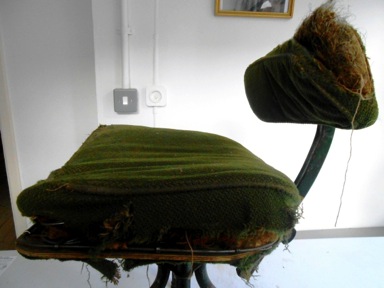
While a repair so extensive as to eliminate any visible signs of damage was not deemed necessary or preferable, making the object safe and stable were concerns that required immediate attention.
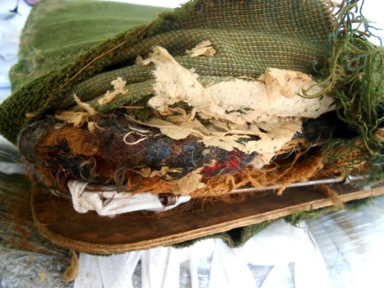
The frame and cover were cleaned using a variety of brushes and a museum vacuum cleaner; this removed much of the dust and debris that had accumulated on it in time and brought back some of the brilliant green of the cover.
The seat: The top and bottom rungs of some of the coils were tied closer with cotton tape in order to control the strain they put on the cover. The stuffing had become lumpy through use and was evened out manually. The cover was then pulled over the stuffing again and manually smoother out, trying to recover some of the original shape. The seat was then wrapped tightly in cling film and allowed to reshape for a few days.
The backrest: the horse hair stuffing was carefully pushed back under the green cover and the lumps smoothed out manually. The backrest was then wrapped tightly in cling film and elastic bands and allowed to regain some of its original shape for a few days. Once these were removed, the exposed stuffing was covered with a layer of nylon netting; this prevented any loose hairs from falling out and also gave it a protective layer against dirt and pests.
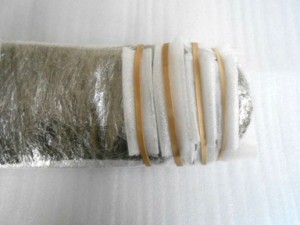
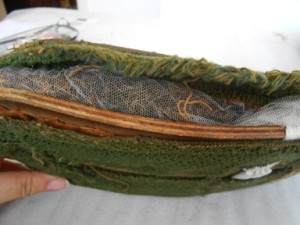
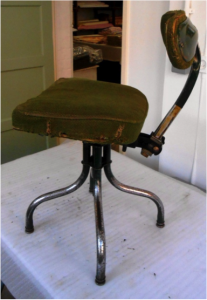
Fortunately, the green textile is in very good condition and could take some stitching. Polyester thread was used to secure the edges of the tears closer to each other, although bringing the sides together completely was not always possible as it would have put too much strain on the fray edges. So the stitching was localised to a few strategic points and applied only to the under side of the textile. Fray edges and stray threads were then tidied up or pushed back into the cover.
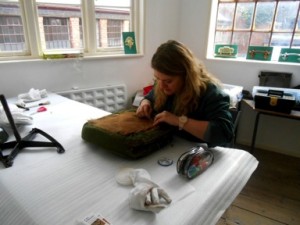
The metal frame, that had been detached and given a clean to bring out some of the high gloss of its original green paint, was reattached and the chair was now ready to go back on display (image 6.)
This object has now received the care it required and looks well looked after, but not out of place within its authentic context. The same approach of minimal intervention will, as a rule of thumb, also be applied to the other objects in need of conservation at the museum.
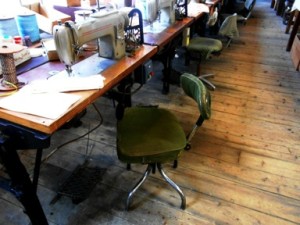
Deborah Magnoler
Project Conservator

